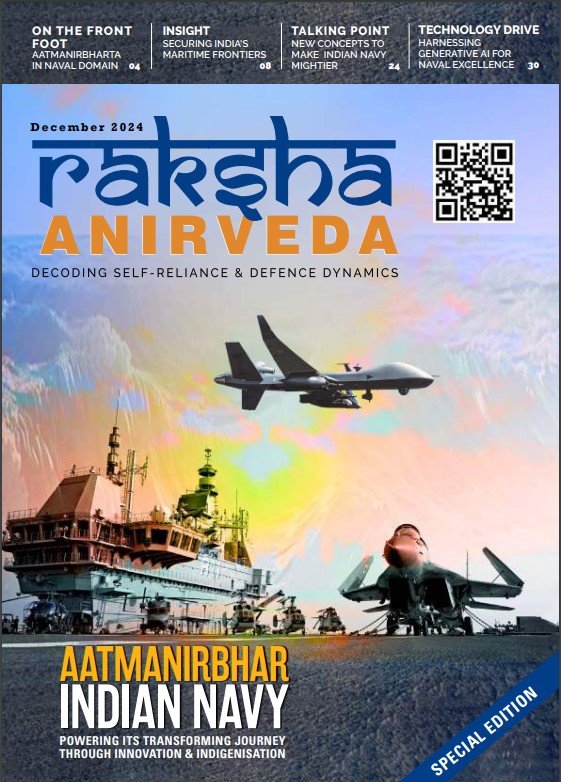A new process for recruitment to the Indian armed forces has been announced by the government of India, the Tour of Duty called Agnipath. While more than 46,000 youth including both girls and boys are expected to be recruited for 4 years, the process of recruitment of these youth would start in the upcoming 90 days.
The cabinet committee on security was the decision maker for implementing such a scheme. The scheme would be open for all classes and for all over India and the new recruits would form a distinct rank and have a different insignia altogether.
What’s the Need for Agnipath?
The Agnipath scheme focuses on reducing the burden of pension and keeping the armed forces of the nation young. These young girls and boys between the age of 17 and half to 21 years of age fall under the eligibility criteria required for recruitment for up to four years as soldiers in the Indian Army and equivalent ranks in the Indian Air Force and the Indian Navy.
This kind of a concept was being followed during World War II and now India is following the same pattern. Under the scheme called “Agnipath’’, the youth shall be recruited for a defined period of four years and will be termed as “Agniveers’’. According to the Ministry of Defence, these “Agniveers” shall be getting a customised package that has been created in an attractive manner to attract the Indian youth. This package would also include risk and hardship allowances as applicable in the tri-services.
The Agniveers will be provided with one time Seva Nidhi package at the end of the four years of tenure while this package shall be containing the contribution made by them during their Tour of Duty and it shall also include the accrued interest there on. This shall also match the contributions from the Government of India that would stand equal to the accumulated amount of their contribution including interest.
As per the Indian Ministry of Defence statement, their package would be exempted from the income tax besides the non-contributory life insurance cover of Rs.48 lakh while they are on the Tour of Duty and also there would be no entitlement to gratuity and pensions.
The Main Mastermind Behind ‘Agnipath’
Late Chief of Defence Staff General Bipin Rawat is the main mastermind behind the Agnipath scheme.
General Bipin Rawat wanted to keep the armed forces of India stronger and younger. He believed that more dynamic and young people that join the armed forces, more is the output and these dynamic and young people can change all of the scenarios.
The rationale behind this is that a country needs young and fresh people to fight and safeguard the nation. Youth can easily adapt to the latest technology and the advancement of the technology has resulted in the reduction of the manpower and mediate persons.
Since the requirement of a higher number of people for managing things has reduced, so has been the case with senior officer’s requirements.
New Delhi has evidently taken a bold step for strengthening its forces and shall play a key role in the near future. The Indian armed forces are going to stand highly competitive in the upcoming years as compared to other Nations.
Coming in As a Global Practice
Across the globe, the recruitment of soldiers is under two bifurcated categories i.e. voluntary and conscription.
Moscow stands as the greatest example of conscription that has equipped itself with a system of 12 months conscription based service. On the other hand, Israel also has a system of conscription and various tenures for women (22 months) and for men the period is for 30 months.
Similar to Russia, Brazil is also equipped with the concept of conscription for tenure of 12 months while in the South Korean Army, Air Force and Navy, they take in conscripts for around 21, 24 and 25 months respectively and all the young women and men have to do this duty before attaining a certain level of age.
In China and the United States, the tenure termed as voluntary service, stands anything between two to eight years while there are several options for getting into reservist or active services and also specific to certain specializations and ranks.
What are the Other Benefits?
It would help in using funds saved for various modernisation programmes, since the Government of India envisages reduction in pensions bills and also lessening stress on the revenue budget of the Indian Armed Forces.
This scheme would aid in keeping the forces fitter, young and diverse, for operational effectiveness to meet the emerging global challenges. The aim of this scheme is to achieve experience vs youth ratios, and a ratio of 1:1 with the current average age profile in the Indian Army at 32 years.
To plug the problem of unemployment in the country, to have a tech-savvy armed forces and to help in stabilizing economic growth, this scheme comes into a powerful role.
Severe Challenges to be Faced by the Scheme
Apart from the benefits that the nation and the youth would gain from the Agnipath scheme, there are several challenges that the plan would majorly face as sketched by the veterans and ex-servicemen.
Major General Harsha Kakar (Retd) reflected a few challenges that could be faced by the scheme: “Managing their future concerns, their reemployment, training cut short, assimilation in units where they are known to be for four years. Cutting manpower, reduced pension, salaries. Unknown of recruitment would be from ITI or across the country with current norms.”
Major General Rajan Kochhar (Retd) also pointed out some intense challenges that could lead to a downfall of the scheme. He says the challenges that can be foreseen is the challenge to mould the mindset of these young men who would be joining the army and tailing them to the ethos of Forces. They would very well know that they are here on a short term basis and therefore that level of motivation may not be there as compared to the other men who are on the permanent commission. The first challenge would be changing their mindset, imbibing the regimental spirit in them and making them suitably trained to perform the assigned roles of the Indian Army. The second challenge is that after four years what would be the methodology in re-inducting 25% of them back into the army. This would be a very big challenge to work out the parameters on which we would be selecting them for re-induction and the third challenge would be how do we employ them gainfully, seems like the ITI etc have more or less not made any impacts so far so how do we expect these schemes to make any impacts now?. And lastly, the challenge is that the knowledge of the army, locations, and various aspects of information which would be available with them could potentially pose a security hazard.
He concluded his remarks by saying that “ It is very important to understand what national security is? And therefore no government or no power worth its name should mess around with a national security system. If you play around with the elements of national security, you would be compromising your security at some point of time. So, this would be the greatest challenge to ensure that the national security is not compromised due to semi-trained soldiers being available to safeguard your nation.”
– The writer is an Aerospace and Defence Analyst & Director ADD Engineering Components (India) Pvt Ltd (An Indo- German Company). The views expressed are of the author and do not necessarily reflect the views of Raksha Anirveda
-The author is a Defence, Aerospace & Political Analyst based in Bengaluru. He is also Director of ADD Engineering Components, India, Pvt. Ltd, a subsidiary of ADD Engineering GmbH, Germany. You can reach him at: girishlinganna@gmail.com. The views expressed are personal and do not necessarily carry the views of Raksha Anirveda






